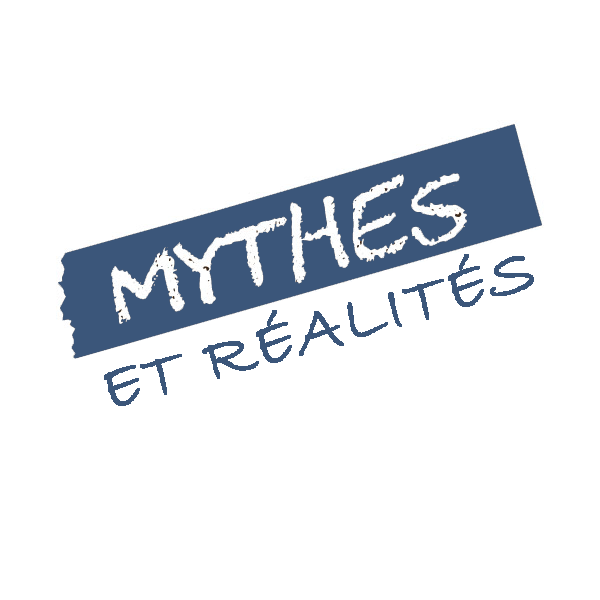Myths and reality
Confront stereotypes and preconceived ideas about the francophone immigrant population
Home / Immigration and settlement / Immigration / Myths and reality

Facts and numbers
The francophone immigrant population of Alberta is constantly growing and mainly settles in the metropolitan areas (Calgary and Edmonton). Some will also take advantage of opportunities in medium and smaller cities such as Fort McMurray (Wood Buffalo area), Lethbridge, Grande Prairie, Brooks, Red Deer, Lacombe and Okotoks.
The following urban areas have some francophone immigrants, but no recent francophone immigrants according to the National Household Survey (NHS): Cold Lake, Canmore, Medicine Hat, High River, Strathmore, Sylvan Lake, Camrose, Lloydminster and Wetaskiwin.
According to the most recent official data from the 2016 census, there are 88,220 people in Alberta whose mother tongue is French and 268,240 who can speak, live and work in French. Immigrants represent 26.5% of the total francophone population at a time when the francophone population represents 2.1% of the entire Alberta population.
Stereotypes and prejudices
Immigrants in Alberta and, more generally, in Canada may be victims of multiple stereotypes, prejudices, misinformation, which can lead to discrimination and constitute an obstacle to their full adaptation. It is therefore essential that immigrants are perceived with their true values, despite the challenges they may face during their settlement. They will thus become full-fledged citizens with the same rights and duties as all other Canadian citizens.
This section aims to enlighten us about some false theories that fuel misunderstanding and hinder the mutual taming of old and new Canadians.

Myths and reality

The permanent residents who arrive in Canada each year enhance the country’s social fabric, contribute to growth and strengthen the economy.
TFWs contribute to the growth of a number of Canadian industries by meeting their one-time and urgent labour needs.
Immigrants who are selected by Canada are in large part from the economic category, therefore selected according to their skills and abilities to contribute as quickly as possible to the economy.
If we refer to the figures published by Immigration, Refugees and Citizenship Canada for 2015 alone, 170,398 immigrants accepted in Canada were in the economic category, 65,490 were in the family category, 32 115 were in the refugee category and 3 844 belonged to other unidentified categories.
It should be noted that even for refugees, who are welcomed in Canada out of solidarity, a legal obligation binds Canada to their reception in accordance with the Convention relating to the Status of Refugees which Canada has ratified.
According to Statistics Canada, due to the increasing aging of the Canadian population and the low birth rate in our country, natural population growth has decreased.
Immigration, which today represents about two-thirds (2/3) of population growth, is expected to be at a sustained level; otherwise, we could reach a level of population growth close to zero. It is this population that will support the maintenance of the workforce necessary for the economy. As for the current reality, immigrants often hold jobs with lower qualifications than their own.
We should rather think of a system allowing them to practice in their fields of expertise so that Canada can make the most of the invaluable talents brought by most immigrants.
Some immigrants have difficulty making contacts, live in isolation and wrongly believe that all whites are racists because they do not speak to them spontaneously.
But reality is quite different, and one should not judge correctly on the basis of small omissions that may depend on several circumstances. Rather, spontaneous discussions should be encouraged, and it is not surprising that it is then possible to identify people ready to learn more about the newcomers and empathetic.
You have to have the courage to break the ice to appreciate the quality of reception from Canadians.
In 2016, immigrants already represented more than 26% of the francophone population of Alberta. The vision of the Francophone community in Alberta is to be a plural community, which requires the development of a community-building project involving as many partners as possible.
Francophone community vitality is the ultimate goal of immigration to Francophone minority communities (FMCs), as it promotes bilingualism, a fundamental value of Canada.
But it should be noted that in reality, French is experienced in very different ways around the globe. Some people have inherited it at birth and adopted it as their mother tongue, which leads to an automatistic effect. Others consider it the language of the colonizer (considered as oppressor or as an agent of civilization, depending on the case). As for the French-Canadians, they had to fight for centuries to preserve their language.
The immigrant therefore needs to be confronted with the historical reality of French in Canada in order to make a conscious choice to commit to preserving this beautiful language that unites us.
According to Statistics Canada, immigration has diversified since the 1960s, following changes in immigration laws and regulations. Newly accepted ethnic and racial groups have naturally had children who were born in Canada and are not immigrants. As a result, any person who is born abroad is considered an immigrant, even if they have acquired Canadian citizenship by naturalization.
Black immigrants come from countries where several languages and dialects are spoken. The latter have their own intonation, sometimes strong, sometimes musical. Therefore, when immigrants come from a place where the language is naturally powerful, it influences how they speak French, and this should not be seen as rude.
While it is true that some terrorists claim to be affiliated with the Muslim religion and act in its name, Islam is a religion that teaches peace and forbids killing one’s neighbor on the same footing as other monotheistic religions.
Islam teaches that human life is sacred and that everyone has the right to be treated with the respect due to every human being. Terrorists are misguided people who represent only a small number among different groups, whether they are Muslims or others. Hatred has no religion.
Young immigrants are no more criminal than their Canadian-born peers. Some are unaware of certain laws, experience integration difficulties or display cultural behaviours that make them more suspicious and vulnerable when they face the police (e.g., being afraid in front of the police), but the vast majority of them adapt well to their host society. Racial profiling of immigrant youth may also be a source of such stereotypes.
